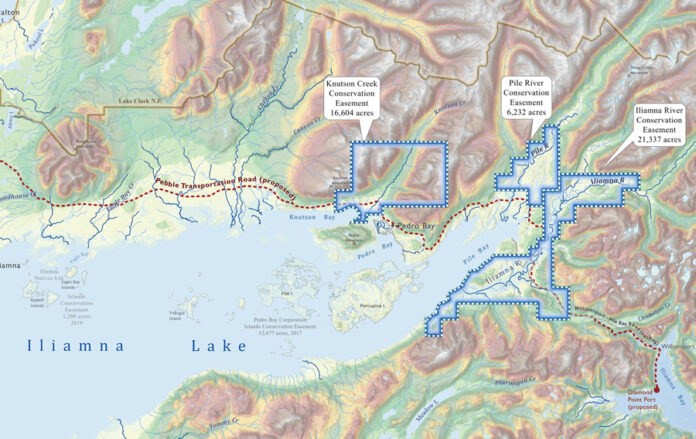Welcome to the latest installment of the Wednesday Wake-Up Call, a roundup of the most pressing conservation issues important to anglers. Working with our friends at Trout Unlimited, Backcountry Hunters & Anglers, the Theodore Roosevelt Conservation Partnership, The Everglades Foundation, Captains for Clean Water, VoteWater.org, and Conservation Hawks (among others), we’ll make sure you’ve got the information you need to understand the issues and form solid opinions.
1. Over 44,000 Acres of Critical Bristol Bay Habitat Permanently Protected
Just before Christmas, The Conservation Fund and Bristol Bay Heritage Land Trust announced the permanent protection of over 44,000 acres of vital land and water habitat on Iliamna Lake that is essential to the health and vitality of Alaska’s Bristol Bay region—the largest wild salmon fishery in the world.
This is fantastic news for opponents of Pebble Mine because it will make it more difficult to build the access roads that such a mine would require:
“This is a historic day for Pedro Bay Corporation and its shareholders,” observed Jason Metrokin, President & Chief Executive Officer Bristol Bay Native Corporation. “The closing of these conservation easements will protect important salmon habitat, ensure shareholders have access to subsistence resources, and provide the corporation with new economic opportunities. Bristol Bay Native Corporation is proud to be a partner in this effort and we congratulate all the people and organizations that helped make it happen.”
Click here for the full story
Related stories:
2. Captains for Clean Water 2022 Impa
For our friends at Captains for Clean Water, 2022 was a wild ride. In their year-end report, they highlight the challenges and accomplishments in their fight to restore the Everglades and protect the estuaries to the east and west of Lake Okeechobee.
Click here for more information
Related stories:
3. Planning for the Klamath dams to come down

Photo by EcoFlight
Now that the decision has been made to remove four dams on the Klamath River, scientists are beginning to think about how different stretches of the river will be affected and what needs to be done to prepare for the return of anadromous fish.
The long-awaited return of steelhead, coho and Chinook salmon, and other native species, puts important attention on the habitat that will become available to these struggling populations once again. To rebuild their numbers and reestablish populations above the former dam sites, the fish require dependable supplies of cold, clean water and intact, connected spawning and rearing habitat. Above and below the dams, habitat restoration work has been underway for years, but now there is new urgency and opportunity to restore key habitat in the portion of the watershed where the four large dams and their accompanying impoundments inundated the landscape and blocked migration.
Click here for the full story
Credit: Source link































